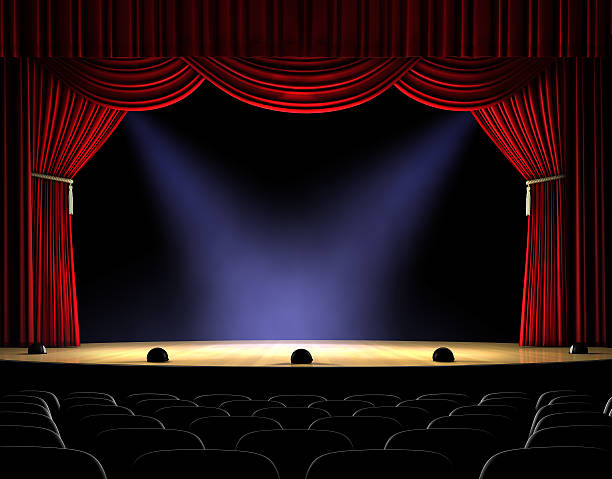Breaking Boundaries: The Rise of Independent Films in America

Independent cinema, or the indies as they are commonly known in Hollywood has a particular place of its own on account of their specifically put forth criteria for acquiring an identity within American film industry. From the norm of mainstream Hollywood, with different stories and new ways to tell them at every turn. In the last few decades, independent films also captured a much bigger share of public attention and recognition as well. In this blog we look at how independent films first emerged in America and their implications for the film industry as a whole, before exploring these developments have helped shape modern cinema.
The Origins of Independent Film: Breaking Away from Hollywood (1960s-1970s)
The tradition of American independent film making leads back to the 60s and 70s when a band of filmmakers started producing films on their own outside limitations set by Hollywood studio system. John Cassavetes viewed as the godfather of American independent cinema initiated a style based on character-driven narratives, improvisational acting and alternative cinematic methods. His “Shadows” (1959), made on a meager budget with little more than the germ of an idea to guide its actors, is often credited as one of the first authentic American independent features.
This was the time of Counterculture revolution and there were many young filmmakers around who wanted to make films on subjects that Hollywood could nether handle nor understand. Movies such as the Dennis Hopper directed Easy Rider (1969) epitomised freedoms, rebellion and captured that American dream at a moment in time. The triumph of “Easy Rider” demonstrated that a niche existed for films fundamentally outside the established Hollywood paradigm and set up future independents.
The Sundance Effect: The 1980s and 1990s Boom
Independent movies were flourishing in America from 1980s and 1990s the Sundance Film Festival was the chief for it. The first few years of Sundance were the most successful and by 1981, the organisation was formed by Robert Redford and the festival became a favourite destination for independent filmmakers. He observed that through the festival it became easier for indie films to reach a large number of viewers, and generate interest among distributors.
Among the most important milestones in prior independent cinema was the emergence of Steven Soderbergh’s ‘Sex, Lies, and Videotape’ in 1989 which won the Palme d’Or at Cannes and the Audience Award at Sundance. As to the former it proved that indie films could come head-to-head with Hollywood superproductions at the box office, while the latter stimulated interest in independent filmmaking.
It was in the 1990s that the so-called ‘indie filmmakers’, who would later dominate the American film market were invented. Independent cinema got a new, original face due to Quentin Tarantino: his first though lesser known ‘Reservoir Dogs’ in 1992 propelled him to the mainstream especially after ‘Pulp Fiction’. His films were witty, full of dialogue and complex narratives which didn’t shy away from referencing his love of genre filmmaking. Other directors of the sort at this time include Kevin Smith, who produced “Clerks” on a mere $27, 000 and Richard Linklater, who directed “Slacker” as well as “Dazed and Confused”.
The Rise of Indie Studios: Miramax and Beyond
Success achieved by the indie films in the 1990s resulted in the formation of independent studios that exclusively dealt with the production and distribution of the indie films. Among the new indie studios, there was Miramax, established in 1979 by Harvey and Bob Weinstein. It had the reputation of keeping experimenting with the picture styles and concerns and of establishing smart ways to promote indie films that came to be popularized.
Miramax in particular was handling distribution of many well known films that can be termed indies with the release of “The Crying Game” (1992) “The Piano” (1993), and “Good Will Hunting” (1997). The example of these films proved that indie cinema was capable of attaining critical success but also box-office success. The firm not only in distributing independent films but also succeeded to influence the career of many directors and actors in the development of indie film industry in Hollywood.
The Digital Revolution: Independent Films in the 21st Century
Some of the most drastic alterations to the idea of independent films emerged as a result of the changes in the 21st century primarily because of digital technology. The ready availability of cheap electronic cameras and instant facilities for ‘getting’ and ‘developing’ a film facilitated shooting films without requiring large sums of money or studio support. This process contributed to an increased blocking of indie movies because the democratization which took place liberated a great number of directors and allowed them to make films.
Netflix, Amazon Prime as well as Hulu also contributed to give a strong boost to independent films. These platforms offered indie films a new method of getting to the audiences, without having to use the usual channels. Among them, Netflix instantly grew into a powerful distributor and/or producer of independent films and documentaries. The experience of such movies as “Beasts of No Nation” (2015) and “Mudbound” (2017) showed that independent movies can have viewers other than in movie theaters.
Also, new types of financing appeared, based on crowdfunding platforms such as Kickstarter and Indiegogo that indie filmmakers used to attract funds to produce their movies. This led to further innovation and eventually could be seen as positive due to the fact that filmmakers no longer had to rely solely on the studios or investors for money which they needed for their productions. Crowdfunding also helped indie filmmakers to create a close-knit community – where supporters could contribute towards the development of the films they would like to watch.
The Impact of Independent Films: Shaping Modern Cinema
Independent films have made a significant contribution to modern cinema; they affected the ways of narration and the themes which are discussed. Indies are brought up quite frequently for being the pioneers in depicting the social problems, portraying the minorities and the struggles, and experimenting with the conventions of the filmmaking. Evidently, indie filmmakers enjoy certain liberties in their work that make them capable of exploring various different levels of filmmaking and come up with ideas that are not so likely to be embraced by Hollywood.
Independence films have also contributed to the shaping of careers of most of the directors we today admire. Some of the directors who have benefited from indie films are; Paul Thomas Anderson, Darren Aronofsky, and the Coen Brothers, who after making indie films have made big films but have not lost their individuality.
The above success story of independent films has also brought about merge of indie cinema and so called basically cinema. Even traditional major studios that base themselves on making massive conventional blockbusters have many of them specific divisions that provide funding and distribution for indie-like projects. This made it possible for the ‘indie feel’ to become an integral part of the mass market cinematic experience as paradigms of indie aesthetics have penetrated every aspect of mainstream motion picture-making from plot construction to character portrayal.
The Future of Independent Film: Challenges and Opportunities
Investigating the position of independent films in the modern movie-making world, it is possible to state that they face a number of threats and opportunities at the same time. One challenge that has been witnessed is that big budget block buster movies and franchise films are flooding the theaters and is becoming tough for indie films to find screens. Nevertheless, more streaming platforms and opportunities for film makers to use digital media tools are the grounds for indie films to expand globally.
Furthermore, the need to see more and more different characters and stories in movies has never been as high as it is now, and indie films can fill this need. Maintaining new ideals, more thematic topics and aesthetic novelties to practice, indie filmmakers are able to pave the way for the changes in American cinematography.
All Things Considered
Independent films in existence in America have grown to be this through the fluid progressive step of the society in its journey in crossing barriers step by step. Beginning from the 1960s to the present time where indie films have emerged into what is today known as mainstream cinema, indie films have remained to be pioneers of the possible forms of cinema.Thus, independent films will always continue to be not only a part of the American film industry, but an important part, as they bring people new and unprecedented ideas, freedom in narration, and a totally different view to Hollywood production.













Post Comment